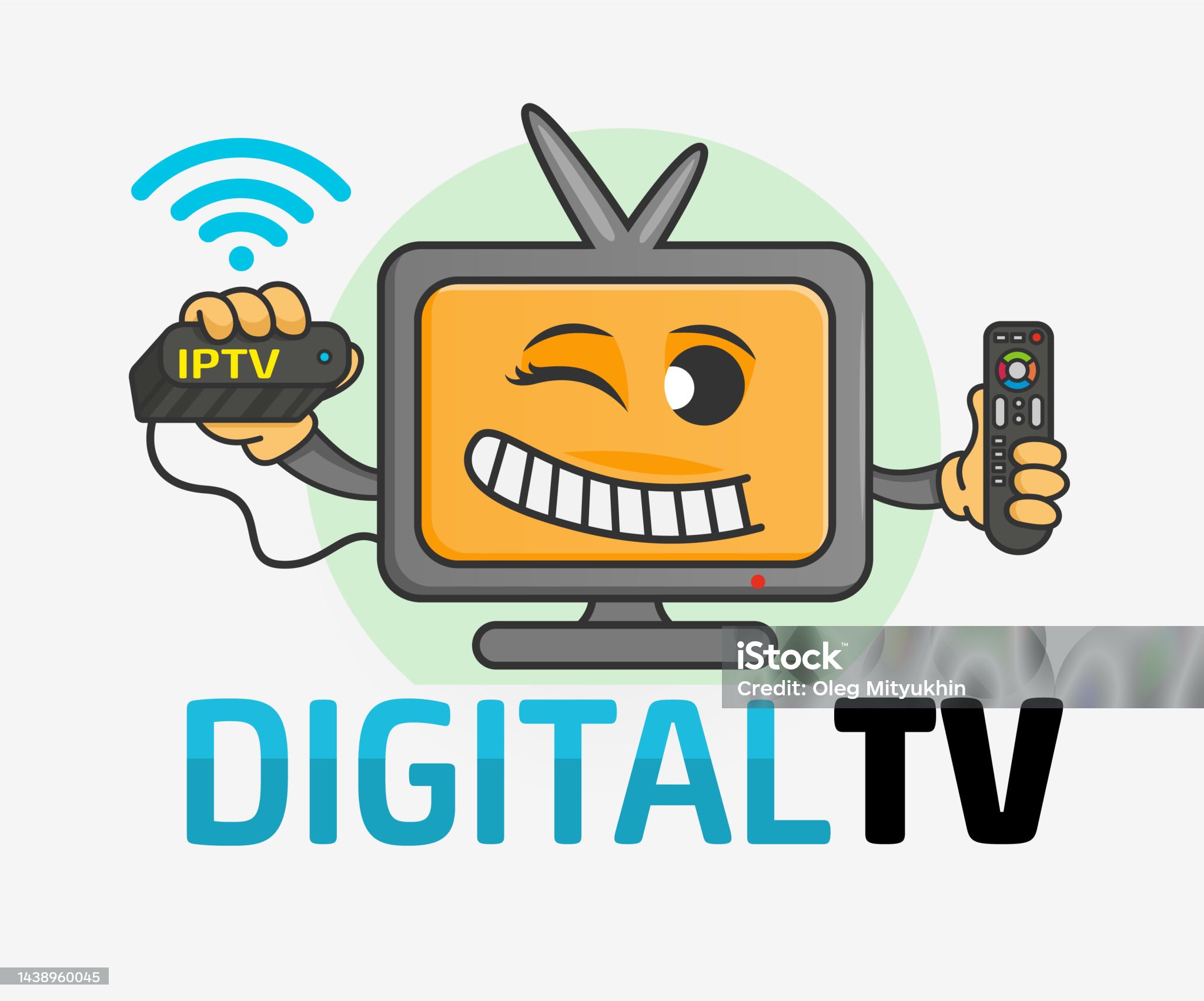Technological Advancements in IPTV: Exploring the USA and UK Markets
1.Understanding IPTV

IPTV, or Internet Protocol Television, is becoming progressively more influential within the media industry. In stark contrast to traditional cable and satellite TV services that use expensive and largely exclusive broadcasting technologies, IPTV is streamed over broadband networks by using the same Internet Protocol (IP) that serves millions of PCs on the current internet infrastructure. The concept that the same on-demand migration is forthcoming for the era of multiscreen TV consumption has already piqued the curiosity of key players in the technology convergence and future potential.
Viewers have now started to watch TV programs and other video entertainment in many different places and on numerous gadgets such as cell or mobile telephones, desktops, laptops, PDAs, and various other gadgets, aside from using good old TV sets. IPTV is still in its infancy as a service. It is expanding rapidly, and various business models are taking shape that could foster its expansion.
Some assert that low-budget production will likely be the first type of media creation to transition to smaller devices and capitalize on niche markets. Operating on the commercial end of the TV broadcasting pipeline, the current state of IPTV hosting and services, nevertheless, has several notable strengths over its rival broadcast technologies. They include HDTV, on-demand viewing, custom recording capabilities, communication features, internet access, and instant professional customer support via alternate wireless communication paths such as cell phones, PDAs, global communication devices, etc.
For IPTV hosting to operate effectively, however, the Internet edge router, the core switch, and the IPTV server consisting of content converters and server hardware configurations have to work in unison. Numerous regional and national hosting facilities must be entirely fail-safe or else the stream quality falters, shows may vanish and fail to record, interactive features cease, the visual display vanishes, the sound becomes interrupted, and the shows and services will malfunction.
This text will discuss the competitive environment for IPTV services in the U.K. and the United States. Through such a comparative analysis, a series of important policy insights across various critical topics can be uncovered.
2.Legal and Policy Structures in the UK and US Media Sectors

According to the legal theory and the related academic discourse, the choice of the regulation strategy and the nuances of the framework depend on perspectives on the marketplace. The regulation of media involves rules on market competition, media proprietary structures, consumer rights, and the safeguarding of at-risk populations.
Therefore, if the goal is to manage the market, we must comprehend what defines the media market landscape. Whether it is about ownership limits, market competition assessments, consumer rights, or child-focused media, the governing body has to understand these sectors; which content markets are growing at a fast pace, where we have competition, integrated vertical operations, and ownership crossing media sectors, and which media markets are slow to compete and ripe for new strategies of key participants.
To summarize, the landscape of these media markets has always evolved to become more fluid, and only if we consider policy frameworks can we predict future developments.
The growth of IPTV everywhere accustoms us to its adoption. By combining traditional television offerings with novel additions such as interactive IT-based services, IPTV has the potential to be a key part of increasing the local attractiveness of remote areas. If so, will this be sufficient for the regulator to adapt its strategy?
We have no evidence that IPTV has greater allure to non-subscribers of cable or satellite services. However, certain ongoing trends have slowed down IPTV's growth – and it is these developments that have led to reduced growth expectations for IPTV.
Meanwhile, the UK adopted a flexible policy framework and a forward-thinking collaboration with the industry.
3.Key Players and Market Share

In the British market, BT is the dominant provider in the UK IPTV market with a share of 1.18%, and YouView has a 2.8% share, which is the scenario of single and dual-play offerings. BT is generally the leader in the UK based on statistics, although it experiences minor shifts over time across the 7 to 9 percent bracket.
In the United Kingdom, Virgin Media was the initial provider of IPTV based on digital HFC networks, followed shortly by BT. Netflix and Amazon Prime are the leading over-the-top platforms in the UK IPTV market. Amazon has its own digital set-top box-focused service called Amazon Fire TV, similar to Roku, and has just entered the UK. However, Netflix and Amazon are absent from telecom providers' offerings.
In the United States, AT&T is the top provider with a market share of 17.31%, surpassing Verizon’s FiOS at a close 16.88%. However, considering only DSL-delivered IPTV, the leader is CenturyLink, trailing AT&T and Frontier, and Lumen.
Cable TV has the overwhelming share of the American market, with AT&T managing to attract an impressive 16.5 million users, mostly through its U-verse service and DirecTV service, which also is active in the Latin American market. The US market is, therefore, divided between the major legacy telecom firms offering IPTV services and modern digital entrants.
In Western markets, major market players use a converged service offering or a strategy focusing on loyal users for the majority of their marketing, promoting triple and quadruple play. In the United States, AT&T, Verizon, and Lumen depend on their proprietary infrastructure or legacy telecom systems to provide IPTV options, albeit on a smaller scale.
4.Content Offerings and Subscription Models

There are variations in the programming choices in the IPTV sectors of the UK and US. The range of available programming includes real-time national or local shows, programming available on demand, pre-recorded shows, and unique content like TV shows or movies only available through that service that aren’t available for purchase or broadcasted beyond the service.
The UK services offer traditional rankings of channels comparable with the UK cable platforms. They also provide moderately sized plans that include the key pay TV set of channels. Content is grouped not just by preferences, but by platform: terrestrial, satellite, Freeview, and BT Vision VOD.
The key differences for the IPTV market are the subscription models in the form of preset bundles versus the more customizable channel-by-channel option. UK IPTV subscribers can opt for extra content plans as their content needs shift, while these channels are included by default in the US, in line with a user’s initial preset contract.
Content alliances underline the varied regulatory frameworks for media markets in the US and UK. The trend of reduced exclusivity periods and the shifts in the sector has major consequences, the most direct being the business standing IPTV for Hospitality Industry of the UK’s leading IPTV provider.
Although a new player to the busy and contested UK TV sector, Setanta is poised to capture a broad audience through presenting a modern appeal and securing top-tier international rights. The power of branding plays an essential role, alongside a product that has a cost-effective pricing and provides the influential UK club football fans with an appealing supplementary option.
5.Future of IPTV and Tech Evolution

5G networks, combined with millions of IoT devices, have stirred IPTV transformation with the integration of AI and machine learning. Cloud computing is greatly enhancing AI systems to implement new capabilities. Proprietary AI recommendation systems are being widely adopted by content service providers to enhance user engagement with their own distinctive features. The video industry has been enhanced with a new technological edge.
A larger video bitrate, via better resolution or improved frame rates, has been a main objective in enhancing viewer engagement and expanding subscriber bases. The advancements in recent years were driven by new standards crafted by industry stakeholders.
Several proprietary software stacks with a compact size are on the verge of production. Rather than releasing feature requests, such software stacks would allow streaming platforms to optimize performance to further refine viewer interactions. This paradigm, reminiscent of prior strategies, hinged on customer perception and their desire to see value for their money.
In the near future, as the technology adoption frenzy creates a balanced competitive environment in audience engagement and industry growth reaches equilibrium, we foresee a more streamlined tech environment to keep older audiences interested.
We emphasize a couple of critical aspects below for both IPTV markets.
1. All the major stakeholders may participate in the evolution in media engagement by turning passive content into interactive, immersive content.
2. We see immersive technologies as the key drivers behind the emerging patterns for these fields.
The constantly changing audience mindset puts analytics at the center stage for every stakeholder. Legal boundaries would obstruct easy access to user information; hence, privacy regulations would likely resist new technologies that may compromise user safety. However, the present streaming landscape suggests otherwise.
The digital security benchmark is currently extremely low. Technological leaps and bounds have made security intrusions more virtual than a job done hand-to-hand, thereby advantaging cybercriminals at a greater extent than manual hackers.
With the advent of headend services, demand for IPTV has been on the rise. Depending on customer preferences, these developments in technology are poised to redefine IPTV.
References:Bae, H. W. and Kim, D. H. "A Study of Factors affecting subscription to IPTV Service." JBE (2023). kibme.org
Baea, H. W. and Kima, D. H. "A Study about Moderating Effect of Age on The IPTV Service Subscription Intention." JBE (2024). kibme.org
Cho, T., Cho, T., and Zhang, H. "The Relationship between the Service Quality of IPTV Home Training and Consumers' Exercise Satisfaction and Continuous Use during the COVID-19 Pandemic." Businesses (2023). mdpi.com